-
Posts
385 -
Joined
-
Last visited
Content Type
Forums
Events
Gallery
Posts posted by CANT
-
-
I can't comment on the cab reconstruction portion but crossover wise I would just replace the 2ohm resistor, 1.75uF (1.8uF) cap & 6uF (6.2uF) cap on the HF side and call it good? If you can fit it maybe the 8uf (8.2uF) on the LF side? I've never noticed all that much difference when messing around with inductors unless the OEM are of an incredibly poor quality.
I would also suggest doing something with the tweeter. Bare minimum replace the stock poly diaphragm with titanium (cheap option)... if you can, what I would really suggest is finding a pair of K703 horns (ebay) that were used in the KLF20/30 & CF2 and buying a pair of Selenium D202Ti drivers. I personally prefer the K703/D202Ti option in the few instances where I've been able to compare the 2. Example: I am currently running the aforementioned horn/driver combo with a single K28E Heresy III woofer and have a pair of K100Ti hanging out in my garage somewhere.
-
-
I'm going to edit this and open it up a bit...
I am mostly interested in the smaller KPT-310-M/KPT-902-M but they aren't mentioned/talked about a whole lot so if you have any of the KPT mono speakers (KPT-310, KPT-325, KPT-902, KPT-904, KPT-942, etc.) and it isn't too much of a bother, could you possibly take a couple pictures of the crossover for me? Top and bottom. I am trying to compare the general architecture of the networks in these models.
Thanks
-
I was very close to picking these up but after speaking with the seller, I found out that crossovers were not included in the sale price...
The price is also back up to $1199 as well
-
On 2/23/2018 at 9:22 AM, jjptkd said:
It doesn't take a rocket surgeon to see what happened here and cost certainly seems to be the driving factor. If the k-52 / 53 / 57 / 61 1.5" driver was "better" than the k-55 the Klipschorn and La Scala would have seen the same change. If performance was the same and cost the same why change? Best case scenario is performance was the same or within an acceptable level at the specified frequency range >600hz at a lower cost otherwise again, why change?
What makes sense to me here (and I'm speculating) was Klipsch probably pays a premium for the k-55 because of its ability to play down low (400hz needed in the k-horn and la scala) and since the Heresy and Cornwall do not need a mid driver that plays that low they were able to come up with a less expensive alternative that met the design goals of those speakers, actually a wise responsible thing to do if you're in the business of selling speakers for profit.
Now it is amazing to me that Klipsch was able to cut so many costs on the Cornwall and Heresy; cabinet materials (MDF) Crossovers (PCB's) Horn lenses (ABS) and horn drivers and still have them perform (arguably) at or near the level of their predecessors. Considering prices for the new models likely went up and costs went down these changes worked out nicely for the bottom line at Klipsch. I wonder who was responsible for the transition from the Heresy and Cornwall in the early to mid '80's to the "II" versions and how big their bonus was?
I would absolutely agree that the switch to the Heppner driver appears to have happened as a cost cutting measure? The Heresy and Cornwall do not command the same $$$ as the La Scala or Klipschorn so keeping the cost down would definitely help them stay competitive in the market place. The K52 is also a VERY good driver, so I do not consider this change a degradation of quality.
On 2/24/2018 at 10:00 AM, jjptkd said:I think the Cornwall 1.5 and Heresy 1.5 demonstrate the fact that these two mid drivers are some what interchangeable, whether or not one would prefer one driver over the other in any set of speakers crossover adjustment or not (not convinced at this point changes to the crossover are needed) is going to be purely subjective. As I've stated before I like the k-55 variants better than the k-52 variants, the sound has a lower / deeper tone and presentation sound stage is some what larger depending on the horn its bolted to.
It is important to remember that the move to the Heppner driver came with some important changes to the network (E2 & B3). Yes, the K55 has better response below 600hz and you can here that difference which means that the way that driver integrates with the woofer is different. This is not just an SPL issue. A lot of those older networks were deceptively simple but that does not mean that they were just thrown together without careful consideration of their implementation.
-
On 2/9/2018 at 7:21 PM, Deang said:
Everything in the first paragraph is wrong. A lot of time and effort went into developing that driver and diaphragm.
One or two were sent to Al for testing. This testing was for Bob, not for John (Allen) - who already knew everything there was to know about it.
The PD5-VH is not a "clone" of the WE 555, but it is based off of it.
Were you a part of the development team for this driver? If you were then I feel like that should be noted as it could present a potential bias. If you weren't then I'm not sure how you can speak with such certainty about the time and/or money that went into the development of the driver?
I should clarify that it's not that I believe a product like this doesn't take time and money, I know for a fact that is does but I do feel that the numbers are stated in a way to express or imbue a sense of quality. Ad speak.
John Allen also very much owns/runs a company that produces a line of Klipsch Heritage knock offs so producing his own driver could absolutely save him some money in the long run? Especially if he also sells the driver in the aftermarket as a Klipsch upgrade, further offsetting the development cost.
And thank you for the information on the data collection.
-
Please see my response in the aforementioned Forte II thread for applicable issues
-
On 1/28/2017 at 2:31 PM, pbvideo said:
Ok, so back to this... the primary issue here is that while the flange at the end of the horn is a mounting flange for the K52 motor assy (diaphragm/magnet) it is NOT the beginning of the horn. The horn actually starts about 1.5-2in up from that flange. This is why the commercial/pro version is shorter. That 1.5-2in is the compression chamber that the phase plug normally resides in. Essentially whats happening here is that at the end of the driver pictured the wave form is being allowed to expand and then is being re-compressed before then travelling through the horn throat normally... it's not a desirable thing and is very likely introducing a fair bit of distortion.
-
 1
1
-
-
On 2/7/2018 at 6:53 PM, jjptkd said:
I understand what you're saying here but after 10 years and $150k developing this new driver do you really think they just slapped one on a horn, took a single measurement at the end and called it good? Maybe they did? I don't know for sure but seems unlikely.
Again, while probably realistic, "10 years and $150k" is very much ad speak... no one really knows how much he spent exactly? and 10yrs could be 10yrs off and on in his free time? Also, while he seems to be charging a pretty penny for these via aftermarket, the primary benefit of producing his own driver would be production cost savings for his speaker line. You can google "HPS4000" if you want to check out his companies page.
As for your reply to my question on the displayed measurements... I think you got confused. While I would like to see tests on other Klipsch horns (the posted graphs used a K401), I was actually asking how many drivers were tested in the collection of the displayed data. Was it the avg of 10 or 20 drivers? or just one of each? I ask because if it was just one driver a piece the touted benefits could be negligible as other drivers from either production company could measure slightly better or worse? I mean we aren't talking about an earth shattering difference in the first place? If multiple drivers were used how do I know that the best A55G isn't being compared to worst K55 they could find? The data appears to come from either Al, Dean or Bob... none of whom I believe would purposely try to deceive anyone on this form but I would still like to see more relevant information. I really mean no offense... I just tend to always approach these types of things with a health dose of skepticism. I mean the K55/PD5V is an excellent driver (also a clone of the Western Electric 555) but that doesn't mean I want to use it on every horn or in every application that requires a roughly 400-5kHz response? I may prefer the voicing of driver X for certain projects or just want something different now and then? Actually, if the A55G was just mentioned as an alternative to the K55 rather than the universal upgrade of a life time I'd likely be less skeptical because nothing is universal and the A55G/K55 is very different from the K52.
-
On 1/28/2017 at 2:31 PM, pbvideo said:
Inspired by this Forte thread (thanks Jesse), I decided to give the A55-G drivers a go in my Chorus II setup. I consulted with Mr Crites and found a way to mount the driver directly to the stock horn in the Chorus (the trick was having enough depth in the cabinet and I ultimately had 1/2" to spare). After more than a month of listening to the A55-G installed in my Chorus II speakers, I've had some time to process the differences over the stock K61 mid driver and there's really no comparison. The overall midrange sound is much better - smoother with more detail and range. I'm very happy with the change over from the k61! Thanks to Jesse and Bob for the help!
I don't have time to explain right now but this is a terrible idea! Just because you can throw an adapter on it and it makes sound does not mean you should!
This actually reminds me of a quote...
On 6/17/2013 at 9:10 AM, Deang said:People need to understand that every audible change is not necessarily a technical improvement (which should lead to audible improvement). Said simply - just because it's different doesn't mean it's "better".
-
On 11/5/2016 at 11:21 PM, Deang said:
I actually asked this in another post and never got an answer but how many drivers were tests in collection of this data? Is this a one to one comparison or avg of a batch? Which version of the K55 was used and was it new/nos or did it have several hours on it?
Though I am not in the market, if I were I would personally be concerned that the 0.58%THD reduction being touted is just ad speak and may not be any better or worse than the manufacturing tolerance either drivers QC might allow? I have definitely owned enough K52/55's to see what I would consider noticeable variances and the aftermarket can definitely be worse!
I would add that you might want to also consider testing the drivers on a K700 and/or K600 so that you can include actual data from a series of K52... if the A55G is going to discussed as an adequate replacement for that driver
-
I’m going to second Nikko components. I currently have or have owned an Alpha II, Alpha III, Alpha 130, Alpha 220, Beta 20, Beta 30, Beta 40,
EQ I, EQ 20, CO 23, and a couple integrated amps that I can’t remember the model numbers of... all have been fantastic pieces, well designed and generally easy to work on/recap.I am also currently running a Marantz 1070 upstairs with what I will call a modified pair of Heresy’s and enjoy it. It replaces a Sansui AU317 that I also liked quite a bit but needs work currently. Despite both amps pushing relatively low wattage, I’ve never turned either up past 50% and both have had excellent bass response. I would like to, at some point, check out a few power/pre-amps from both brands... though I am thinking my next acquisition will be either a McIntosh MAC4100 or MC250 or both?
-
Big thanks to jjptkd for helping me out in acquiring the second K603!
-
-
If I remember correctly the KG4 has roughly the same internal volume as the Heresy... I know I had at one point considered doing the same thing to a pair of HII using KG4 radiators mostly because I had the parts lying around....
You might just try a different amp though? The HIII doesn't have the low end response of the Cornwall obviously but you shouldn't be missing that much?
-
Some accompanying notes:
1. While the entire snout assemblies are swappable the diaphragms themselves are not.
2. Even though the K63/64 snout does bolt on I do not think it could support the weight of K60's magnet
-
-
In a post I made a while back, in which I was selling a couple Epic Series drivers, I mentioned that that said driver appeared to be based on the DH1506/DH2 family of drivers... To help explain that comment I thought I would post some pictures
K60M/DH1506 Magnet
K60M/DH1506 Snout Assembly
K63KN/K64KN Magnet
K63KN/K64KN Snout Assembly
-
I've updated the post... only one left now
-
4 hours ago, pzannucci said:
On your #2, many find Ti diaphragms unnatural sounding in the mids. I fit that category and think Phenolic the way to go. You just don't have the ability to do a two way configuration with phenolic, at least easily, when used.
Yeah, I personally think that the bright/detailed nature of the Ti is one of the reasons they may have raised the crossover points of the HIII and CWIII... bringing in a bit more of the woofer for warmth. I've switched back and forth in my CWI/III's and actually like both diaphragms for the reasons stated reason. This back and forth is actually one of the reasons why I started the topic on the 127120 to try and see what other peoples opinion of it were in relation to its design/material updates. Not that I can ever seem to take any ones word for anything and will likely just end up just trying them out for myself... I will also one day try out the K66E/PSD2002-16 as a K52 replacement. I have tried the PSD2002-8 as a tweeter and didn't much care for it but the idea of using this driver as a mid is interesting?
-
This actually wouldn't be a bad thing to get an update on... My guess would be that it is somewhere near $400 now though
-
-
3 hours ago, justinICT said:
would that require a change in the crossover design changing to the K90 or K100?
If you reused the original K74 magnet then no, nothing should need to be done at all. If you switched to the K100 magnet you might want to pad it down with a resistor as it is a bit large and has a slightly higher output, though you could just as easily like the extra output. The K90 is slightly smaller so it has just a hair less output so you would have to want that outcome. I know I tried both back in the day but can't remember which I preferred... I do know my original K74 magnets are sitting in a box in my garage so I preferred one of them.
Basically, the K90 is the same magnet as the K76 found in the Heresy II, Quartets and a few other KG's... the K100 is the same magnet as the K79 from the Corwall II, Forte's, Chorus' and KLF's. The K79 magnet is also used in the K107Ti found in the HIII/CWIII and the somewhat confusingly named K100Ti/K79T found in the Forte III. I should also point out that if I remember correctly the suffix for the K90 is KV so it would be Video-shielded.
-
Links for OEM parts
Ti Tweeter Diaphragm $36.95ea
Ti Midrange Diaphragm $79.50ea
Phenolic Midrange Diaphragm $59.50ea


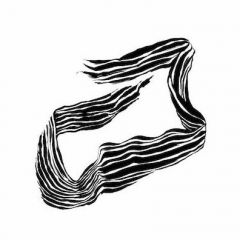
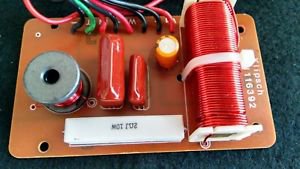

.jpg.6c7de51eb1e7d679fa50a12bcd452a44.jpg)
.jpg.792371b928fe8edfc6c3d41ba5534d62.jpg)
.jpg.c5d932a42ef4545023783b46e97e7faf.jpg)
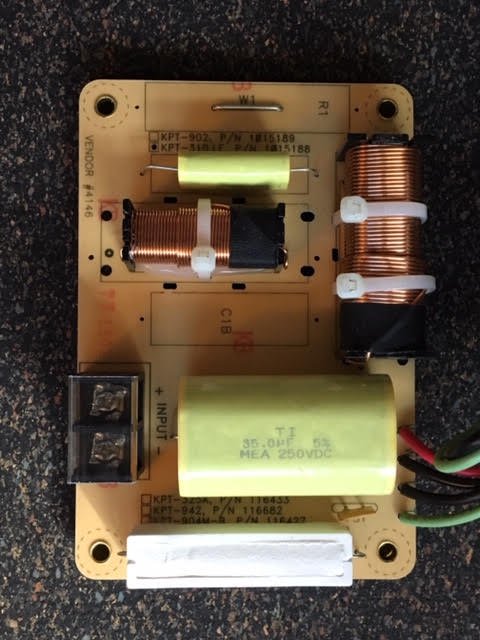
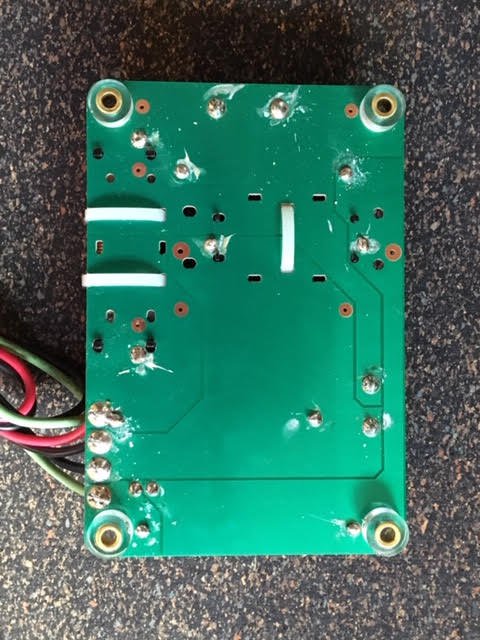


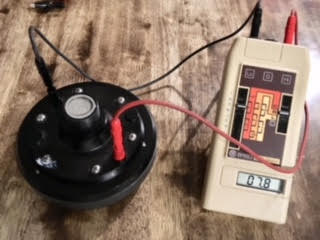

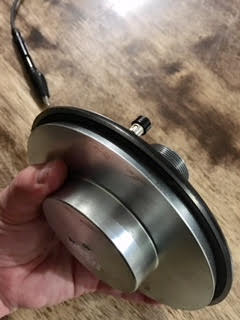
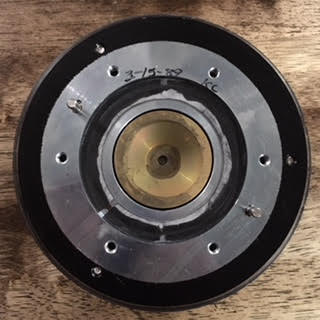
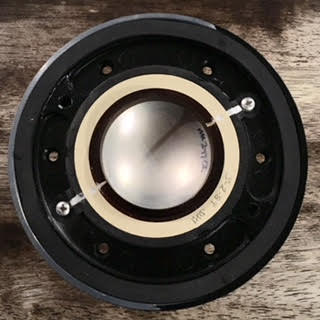

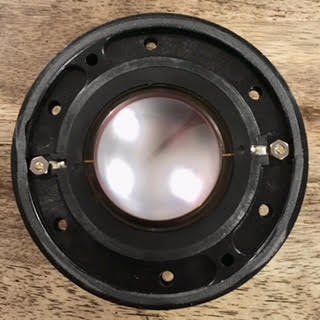
New Klipschorn AK6 coming out?
in General Klipsch Info
Posted
I am VERY interested in the adapter plate/B&C driver combo used in the K771 assembly!
The DE5/DE7 this appears to be based on isn't a terribly expensive driver at retail so it makes me wonder if they might not switch over the rest of the Heritage line? They all began with the K77 after all.